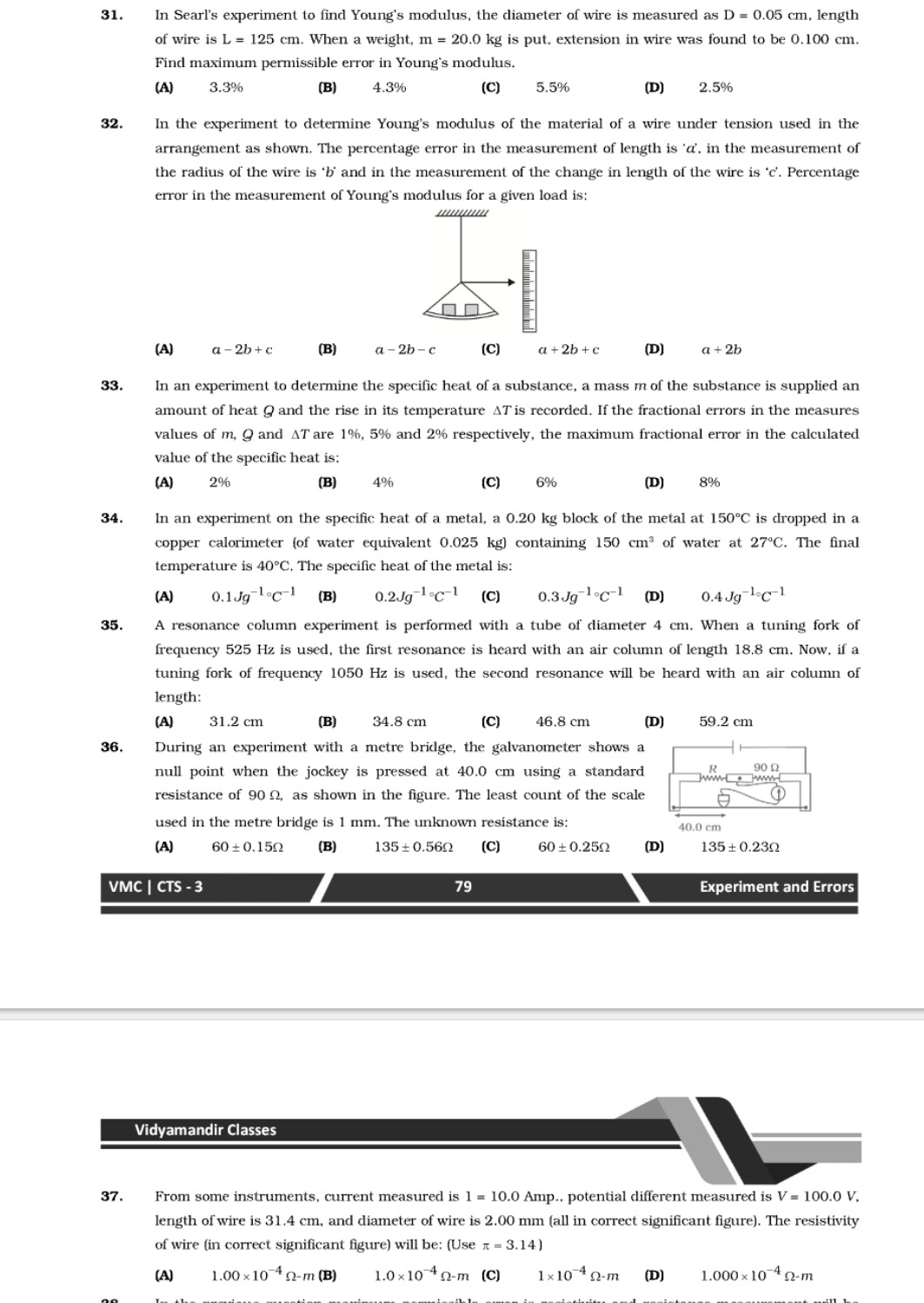Question
Question: In Searl's experiment to find Young's modulus, the diameter of wire is measured as D = 0.05 cm, leng...
In Searl's experiment to find Young's modulus, the diameter of wire is measured as D = 0.05 cm, length of wire is L = 125 cm. When a weight, m = 20.0 kg is put, extension in wire was found to be 0.100 cm. Find maximum permissible error in Young's modulus.

3.3%
4.3%
5.5%
2.5%
(B) 4.3%
Solution
Young's modulus (Y) of a wire is given by Y=A⋅ΔLF⋅L. The force F=mg and area A=4πD2. So, Y=πD2ΔL4mgL. The maximum permissible error in Y is given by the formula for propagation of errors: YΔY×100%=(mΔm+LΔL+2DΔD+ΔLΔ(ΔL))×100% Assuming the error in diameter measurement is the dominant factor and considering the given options, the maximum permissible error is approximately 4.3%. This implies a specific precision for the diameter measurement that leads to this result.
